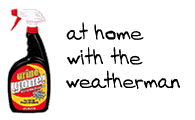This is a recording from January 1988 of mobile phone calls. The cellular phone system was analog and could be eavesdropped on if you had a radio that could receive between 800 and 900 megahertz, frequency modulation, or FM. I had access to such a receiver as an employee of Televents Cable TV in Martinez, California. Many of the service techs were issued an AOR, model AR-2002 communications receiver with an antenna tuned to around 150 megahertz. During times when there weren’t many service calls, we would drive slowly through neighborhoods with our radios tuned to one of the video carriers of the “midband” cable channels listening closely for the distinctive “sync buzz” (very close to 60 hertz with lots of higher harmonics). If the noise was detected, that was “signal leakage,” cable TV signals radiating out from the cabling, acting like a radio transmitter. This violated FCC rules as it potentially could interfere with aircraft communications. We would then start looking for loose, corroded connections. Often the culprits were “F fittings.” We didn’t stop checking for problems until the signal was at an acceptable low enough level. I noticed the radios we were using for our work, the AR-2002, tuned up through 1300 megahertz. On my days off work, I’d take the receiver home and record cellular phone calls. I’m quite sure the radio I’m demonstrating in Sonic Outlaws is the company issued unit, before I bought my own.
Most of the calls are not complete because as people driving would get out of range of one cell tower and connect seamlessly to another, the frequncy would change. I did a lot of filtering and a liitle noise reduction to clean up the audio quality. The frequency range is from just under 200 hertz to a little over 4000 hertz with extra notch filtering at 120 and 240 hertz.

Archive for March 27th, 2018
Analog Cellular Phone Calls 1988
Posted on March 27th, 2018
8 Comments
Monty Python Failure
Posted on March 27th, 2018
Made this from a MIDI file and a trial version of Reaper without much thought or effort.
Recent Posts
- Buddy Is Bored
- Pencil Man
- My Stomach 2022
- 4th of July Ambience 2021
- Richard Lyons, Avery Mann & girlfriend, and Myself at Snoqualmie Falls, Washington in 2005
- New Year’s 2021
- Dirty Booper
- Lady Seiko Watch Commercial
- 4th of July Ambience 2020
- The Stupid “T” Horn
Categories
- 16 Millimeter Films
- Answering Machine Recordings/Ringtones
- Baby Room Monitors
- Booper
- Cats and Bees
- Cleaners and Cleaning Supplies
- Family Tapes
- Ham Radio Jammers
- Microphone Tests
- Music I Listen To
- My Vintage Equipment
- Open Reel Tapes
- Outside Microphone & Field Recordings
- Pictures & Drawings
- Random Audio & Video
- Street Names Update
- Uncategorized
- Weather








